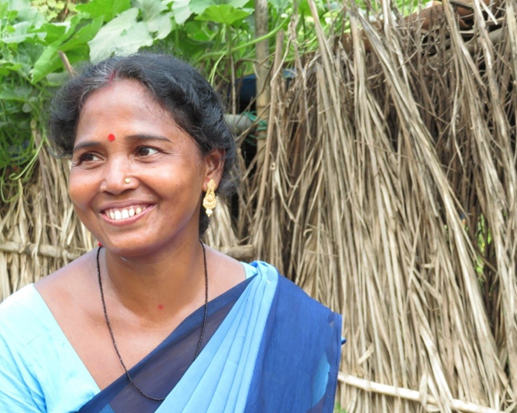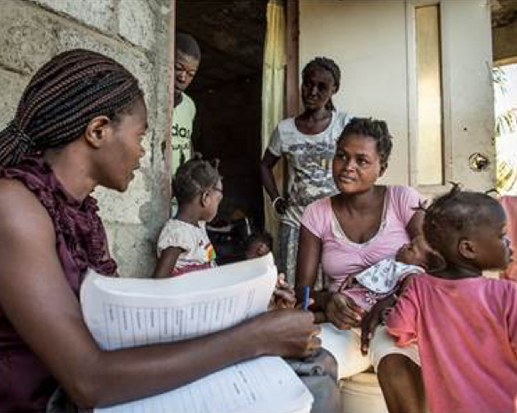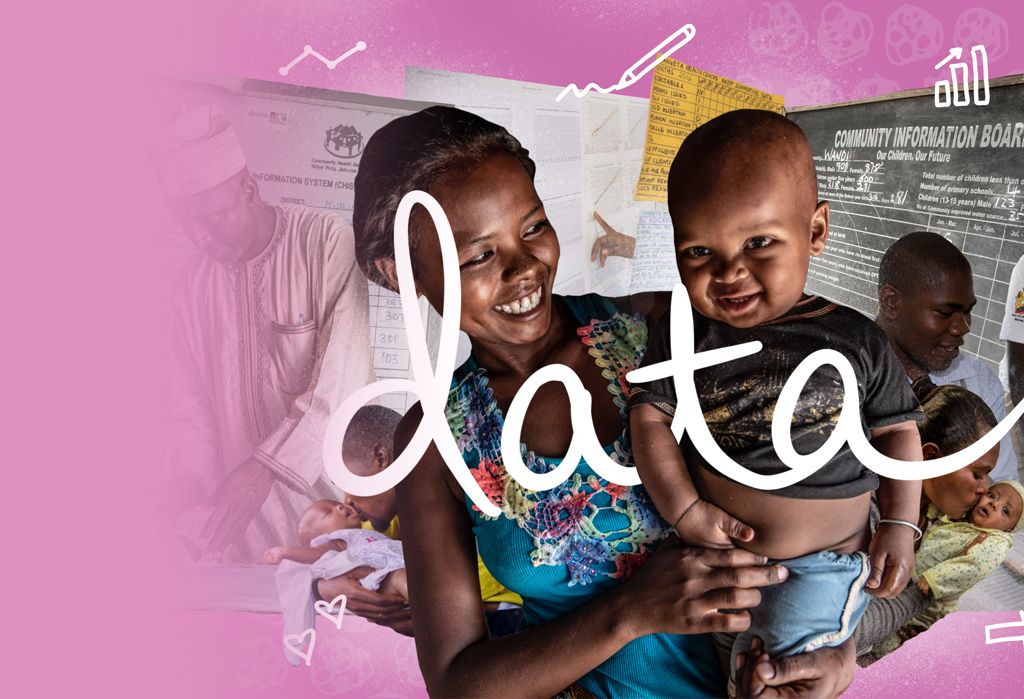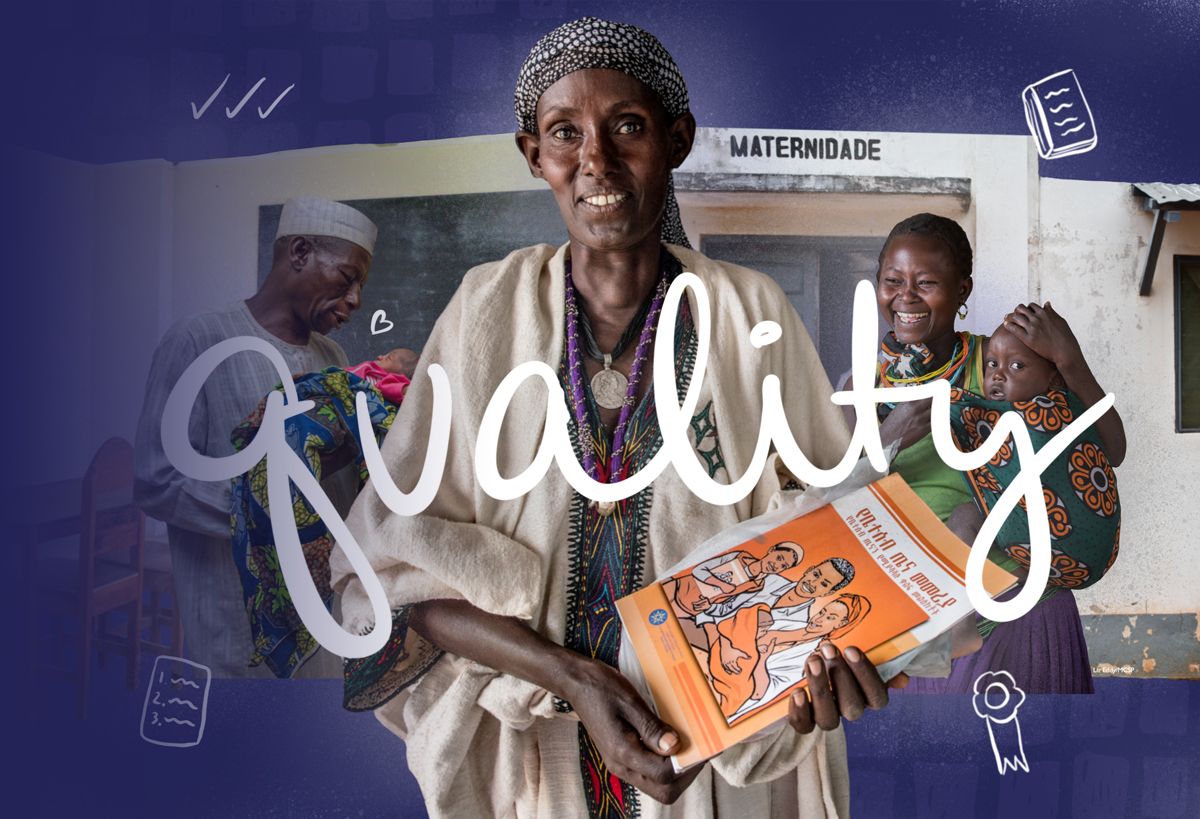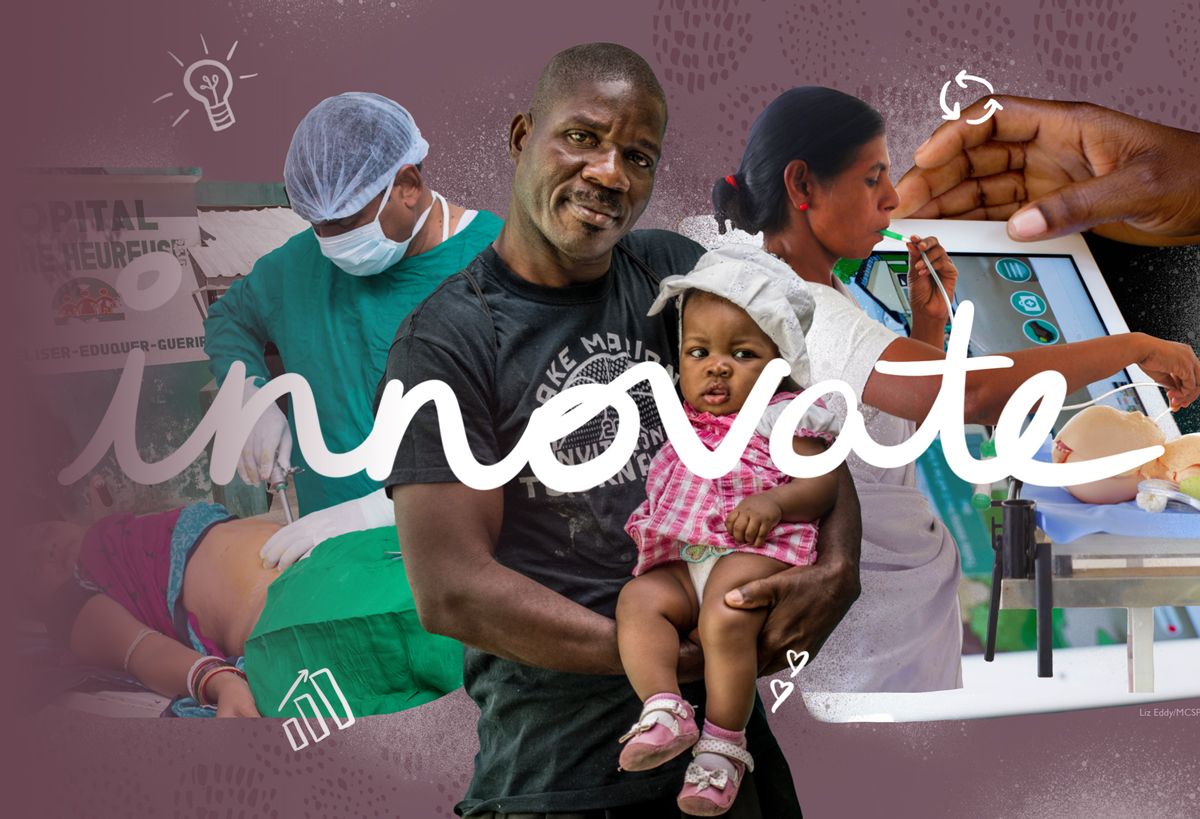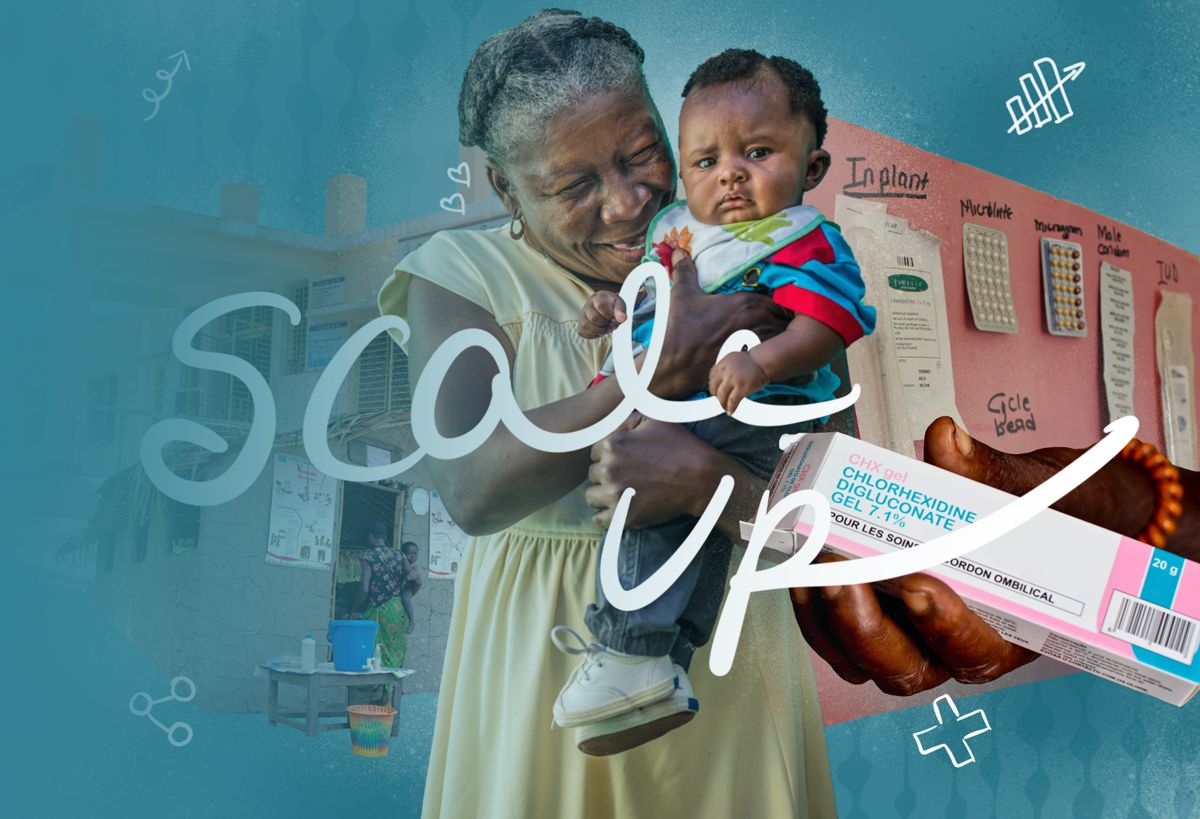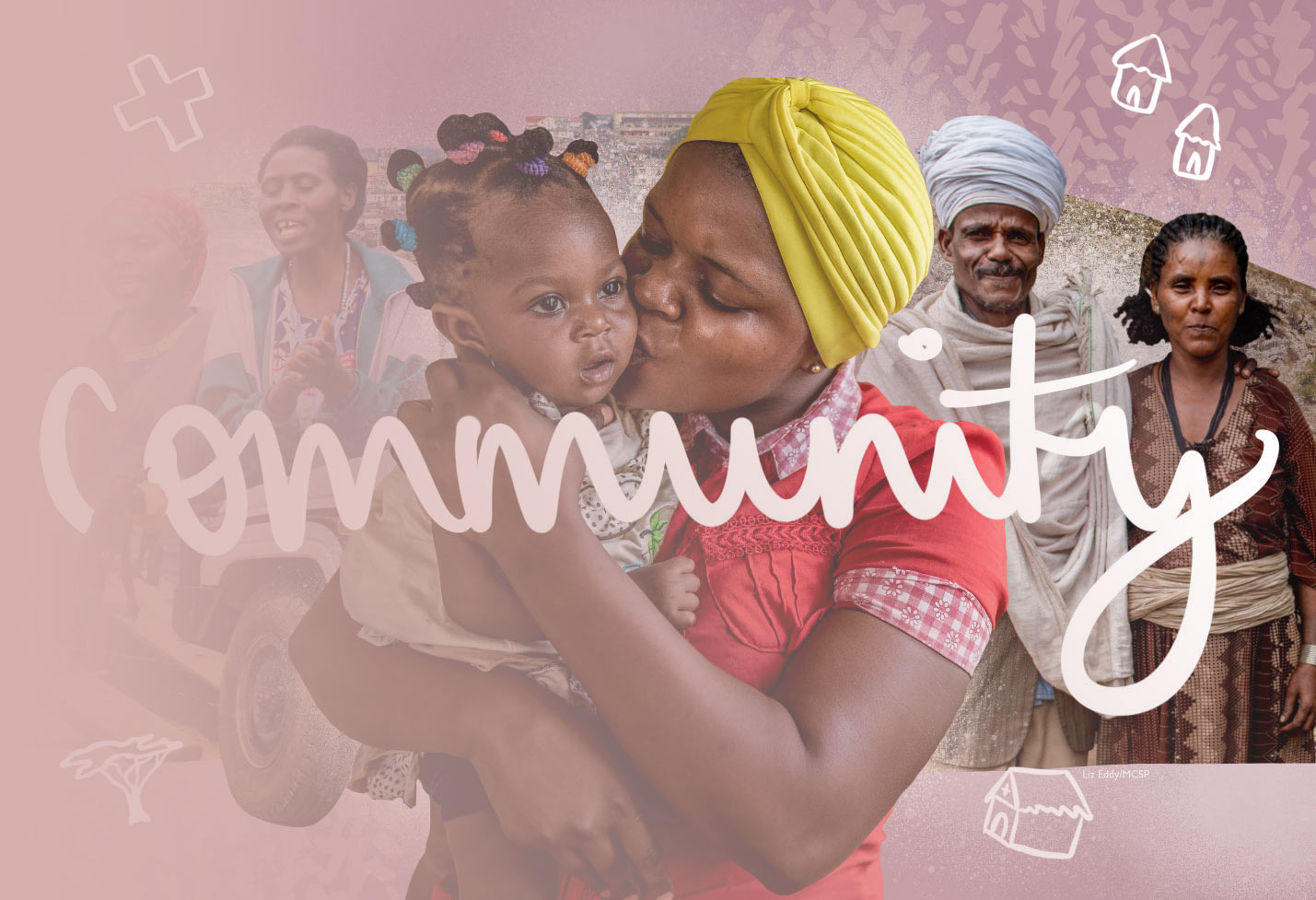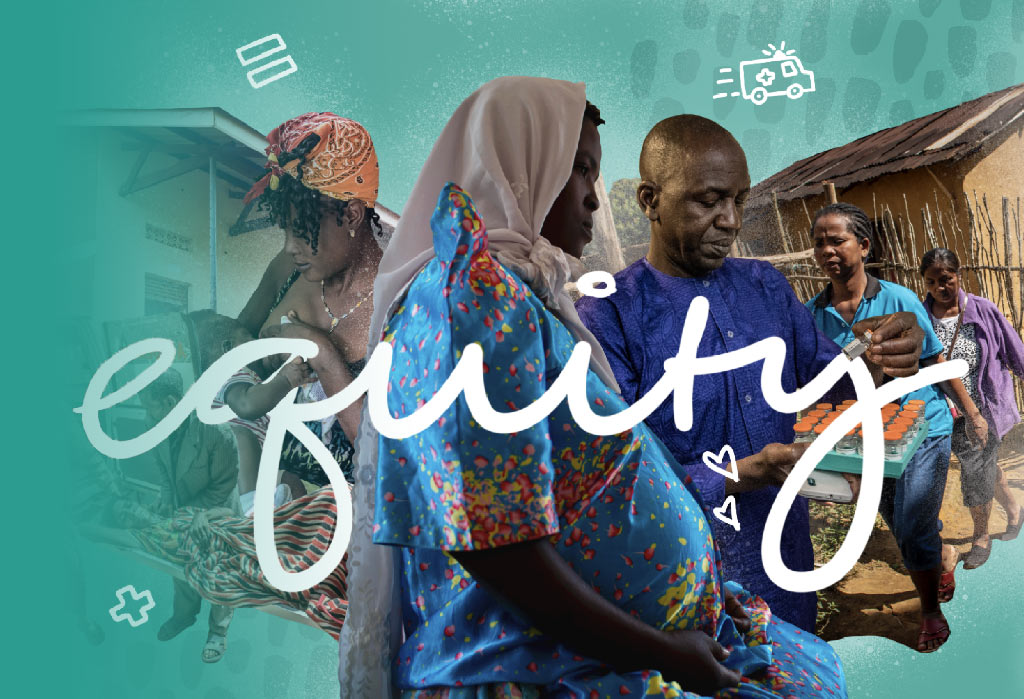About MCSP
The Maternal & Child Survival Program was a multi-partner, flagship program in support of USAID’s priority goal of preventing child and maternal deaths. Our work was evidence-based and results oriented. We focussed on increasing coverage and utilization of high-quality reproductive, maternal, newborn and child health interventions at the household, community and health facility levels.
Learn More
“
I have come to learn that it is not good for men to leave all the work related to their family and children to the ladies alone. We should be sharing responsibilities for life to move on smoothly.”
After five years, MCSP is enormously proud to have measurably improved health care services in communities with a population totaling over 200 million people.
“
Everyone in my village now supports my noble work and comes to me for advice.”







 By the Numbers
By the Numbers

 Selected Cumulative Results
Selected Cumulative Results
 Over 3,918,000 children received the third and final dose of the diphtheria, pertussis, and tetanus (DPT) vaccine.
Over 3,918,000 children received the third and final dose of the diphtheria, pertussis, and tetanus (DPT) vaccine.
 Over 37,000 babies who weren’t breathing or crying at birth were resuscitated.
Over 37,000 babies who weren’t breathing or crying at birth were resuscitated.
 Over 1,838,000 women received a uterotonic immediately after birth to prevent postpartum hemorrhage.
Over 1,838,000 women received a uterotonic immediately after birth to prevent postpartum hemorrhage.
 Over 546,000 clients voluntarily chose a family planning method during an MNCH service visit.
Over 546,000 clients voluntarily chose a family planning method during an MNCH service visit.
 Over 17,800 HIV-positive pregnant women received antiretrovirals to reduce risk of mother-to-child transmission.
Over 17,800 HIV-positive pregnant women received antiretrovirals to reduce risk of mother-to-child transmission.
 Over 10,000 health facilities actively implemented a quality improvement approach.
Over 10,000 health facilities actively implemented a quality improvement approach.
 Over 495,000 participants were trained with skills and knowledge to improve quality of RMNCH services.
Over 495,000 participants were trained with skills and knowledge to improve quality of RMNCH services.
 Among children under five, more than 681,000 with diarrhea – and over 617,000 with pneumonia – were treated.
Among children under five, more than 681,000 with diarrhea – and over 617,000 with pneumonia – were treated.
 Over 5,191,000 children under five reached by nutrition programs.
Over 5,191,000 children under five reached by nutrition programs.
 Over 120 policies developed or updated in 17 countries.
Over 120 policies developed or updated in 17 countries.
 In 12 countries, pre-service education strengthened to improve RMNCH services.
In 12 countries, pre-service education strengthened to improve RMNCH services.
“
At school, I theoretically learned about afterbirth complications, but with MCSP training, I got to practice and I am confidently saving lives. [The training] improved my self-confidence.”
 Child Health
Tremendous achievements have been made in decreasing the number of deaths of children under the age of five. However, the rate of these improvements varies greatly from region to region. In sub-Saharan Africa, for example, 1 in 9 children dies before the fifth birthday—more than 15 times the average for developed regions. For Southern Asia, about 1 in 16 children dies before age five. The good news is that the primary killers of children—pneumonia, diarrhea and malaria—are preventable and treatable.
READ MORE
Child Health
Tremendous achievements have been made in decreasing the number of deaths of children under the age of five. However, the rate of these improvements varies greatly from region to region. In sub-Saharan Africa, for example, 1 in 9 children dies before the fifth birthday—more than 15 times the average for developed regions. For Southern Asia, about 1 in 16 children dies before age five. The good news is that the primary killers of children—pneumonia, diarrhea and malaria—are preventable and treatable.
READ MORE
 Community Health and Civil Society Engagement
Effective community-based approaches are critical to improving reproductive, maternal, newborn, child and adolescent health. They require strengthening the capacity of health systems to engage communities, and building strong systems of service delivery outside of health facilities to reach those not currently accessing key health services.
READ MORE
Community Health and Civil Society Engagement
Effective community-based approaches are critical to improving reproductive, maternal, newborn, child and adolescent health. They require strengthening the capacity of health systems to engage communities, and building strong systems of service delivery outside of health facilities to reach those not currently accessing key health services.
READ MORE
 Gender
Gender inequality inhibits women and girls from effectively understanding, accessing and utilizing reproductive, maternal, neonatal, child and adolescent health (RMNCAH) services. This includes the use of family planning methods to control if, when and how often to become pregnant; the ability to deliver safely in a facility or with a skilled birth attendant; and access to the respectful care needed to ensure women and their children are healthy.
READ MORE
Gender
Gender inequality inhibits women and girls from effectively understanding, accessing and utilizing reproductive, maternal, neonatal, child and adolescent health (RMNCAH) services. This includes the use of family planning methods to control if, when and how often to become pregnant; the ability to deliver safely in a facility or with a skilled birth attendant; and access to the respectful care needed to ensure women and their children are healthy.
READ MORE
 Health Systems Strengthening & Equity
USAID invests in health systems strengthening (HSS) to promote country ownership and sustainability, scale-up solutions, and promote greater efficiencies in investments. Sustained improvements to reproductive, maternal, newborn and child health (RMNCH) cannot be achieved through a stand-alone program or individual interventions.
READ MORE
Health Systems Strengthening & Equity
USAID invests in health systems strengthening (HSS) to promote country ownership and sustainability, scale-up solutions, and promote greater efficiencies in investments. Sustained improvements to reproductive, maternal, newborn and child health (RMNCH) cannot be achieved through a stand-alone program or individual interventions.
READ MORE
 Immunization
Globally, immunization prevents 2-3 million deaths each year. The World Health Organization estimates that the remaining under-5 deaths — approximately 1.5 million deaths annually — could be prevented with existing vaccines. Success in reducing vaccine-preventable mortality has been dramatic, but it cannot be taken for granted.
READ MORE
Immunization
Globally, immunization prevents 2-3 million deaths each year. The World Health Organization estimates that the remaining under-5 deaths — approximately 1.5 million deaths annually — could be prevented with existing vaccines. Success in reducing vaccine-preventable mortality has been dramatic, but it cannot be taken for granted.
READ MORE
 Innovations
Closing gaps in coverage, quality and equity of health services requires that proven, high-impact interventions be implemented at scale. It also necessitates conceptualizing, developing and taking to scale novel processes and products to end preventable child and maternal deaths. Innovation not only helps developing nations catch up, but enables them to "leapfrog" over constraints to improve reproductive, maternal, newborn, child and adolescent health.
READ MORE
Innovations
Closing gaps in coverage, quality and equity of health services requires that proven, high-impact interventions be implemented at scale. It also necessitates conceptualizing, developing and taking to scale novel processes and products to end preventable child and maternal deaths. Innovation not only helps developing nations catch up, but enables them to "leapfrog" over constraints to improve reproductive, maternal, newborn, child and adolescent health.
READ MORE
 Malaria
An estimated 85% of all deaths from malaria occur in children under five. In malaria-endemic areas, 50 million women will become pregnant each year. These women are highly susceptible to the consequences of malaria, which lead to increased maternal death and severe maternal anemia, low birth weight, and infant death.
READ MORE
Malaria
An estimated 85% of all deaths from malaria occur in children under five. In malaria-endemic areas, 50 million women will become pregnant each year. These women are highly susceptible to the consequences of malaria, which lead to increased maternal death and severe maternal anemia, low birth weight, and infant death.
READ MORE
 Maternal Health
Over the last two decades, the global community has witnessed remarkable reductions in the number of maternal deaths worldwide. Yet, too many women — nearly 800 women per day — still die in pregnancy and childbirth from treatable complications.
READ MORE
Maternal Health
Over the last two decades, the global community has witnessed remarkable reductions in the number of maternal deaths worldwide. Yet, too many women — nearly 800 women per day — still die in pregnancy and childbirth from treatable complications.
READ MORE
 M&E and Learning
MCSP’s wide programmatic scope and integrated approach present unprecedented opportunities to scale up proven interventions and test innovative approaches to achieve improved outcomes at scale.
READ MORE
M&E and Learning
MCSP’s wide programmatic scope and integrated approach present unprecedented opportunities to scale up proven interventions and test innovative approaches to achieve improved outcomes at scale.
READ MORE
 Newborn Health
Despite global efforts to develop and promote high-impact interventions for newborn health, nearly three million infants die each year within the first month of life, with more than three-quarters of these deaths occuring in sub-Saharan Africa and South Asia. Improvements in the prevention of newborn death have lagged behind those for maternal and child health.
READ MORE
Newborn Health
Despite global efforts to develop and promote high-impact interventions for newborn health, nearly three million infants die each year within the first month of life, with more than three-quarters of these deaths occuring in sub-Saharan Africa and South Asia. Improvements in the prevention of newborn death have lagged behind those for maternal and child health.
READ MORE
 Nutrition
Maternal anemia, even moderate cases, increases the risk of dying during childbirth. Iron deficiency also contributes to poor birth outcomes and can reduce iron stores at birth, jeopardizing cognitive development and increasing the risk of child mortality. Moreover, stunting compromises adult height attainment, ability to learn, grade completion in school, productivity, and income.
READ MORE
Nutrition
Maternal anemia, even moderate cases, increases the risk of dying during childbirth. Iron deficiency also contributes to poor birth outcomes and can reduce iron stores at birth, jeopardizing cognitive development and increasing the risk of child mortality. Moreover, stunting compromises adult height attainment, ability to learn, grade completion in school, productivity, and income.
READ MORE
 Reproductive Health
Worldwide, 225 million women currently wish to delay or prevent pregnancy, yet do not use contraceptives. The reasons for non-use are complex, involving social, cultural and economic barriers, fears about side effects, and lack of access to a trusted provider. Greater access to family planning will be vital to achieving global goals in maternal health and child survival.
READ MORE
Reproductive Health
Worldwide, 225 million women currently wish to delay or prevent pregnancy, yet do not use contraceptives. The reasons for non-use are complex, involving social, cultural and economic barriers, fears about side effects, and lack of access to a trusted provider. Greater access to family planning will be vital to achieving global goals in maternal health and child survival.
READ MORE
 Social and Behavioral Change Communication
As USAID’s flagship global program in maternal, newborn and child health, MCSP has the opportunity to reach women and their families throughout Asia and Africa with contextualized Social and Behavioral Change Communication approaches at both facility and community levels.
READ MORE
Social and Behavioral Change Communication
As USAID’s flagship global program in maternal, newborn and child health, MCSP has the opportunity to reach women and their families throughout Asia and Africa with contextualized Social and Behavioral Change Communication approaches at both facility and community levels.
READ MORE
 Water, Sanitation and Hygiene (WASH)
Handwashing is the single most cost-effective intervention to prevent pneumonia and diarrhea in children, and reduces infections in mothers and children during pregnancy and childbirth. Both A Promise Renewed and the Integrated Global Action Plan for the Prevention and Control for Pneumonia and Diarrhoea (GAPPD) list handwashing and other hygiene behaviors as core interventions for protecting children from these leading causes of death.
READ MORE
Water, Sanitation and Hygiene (WASH)
Handwashing is the single most cost-effective intervention to prevent pneumonia and diarrhea in children, and reduces infections in mothers and children during pregnancy and childbirth. Both A Promise Renewed and the Integrated Global Action Plan for the Prevention and Control for Pneumonia and Diarrhoea (GAPPD) list handwashing and other hygiene behaviors as core interventions for protecting children from these leading causes of death.
READ MORE

 Worked in 32 countries worldwide
LEARN MORE
Worked in 32 countries worldwide
LEARN MORE
“
In my community, the greatest wealth that people can have is health. Seeing that I can help people live in perfect health is my greatest satisfaction.”
Our Resources
The MCSP partnership brought together experts on a wide range of maternal, newborn and child health topics. Our work was evidence-based and results driven. Please browse our full catalog of resources —
and final report—
below.

